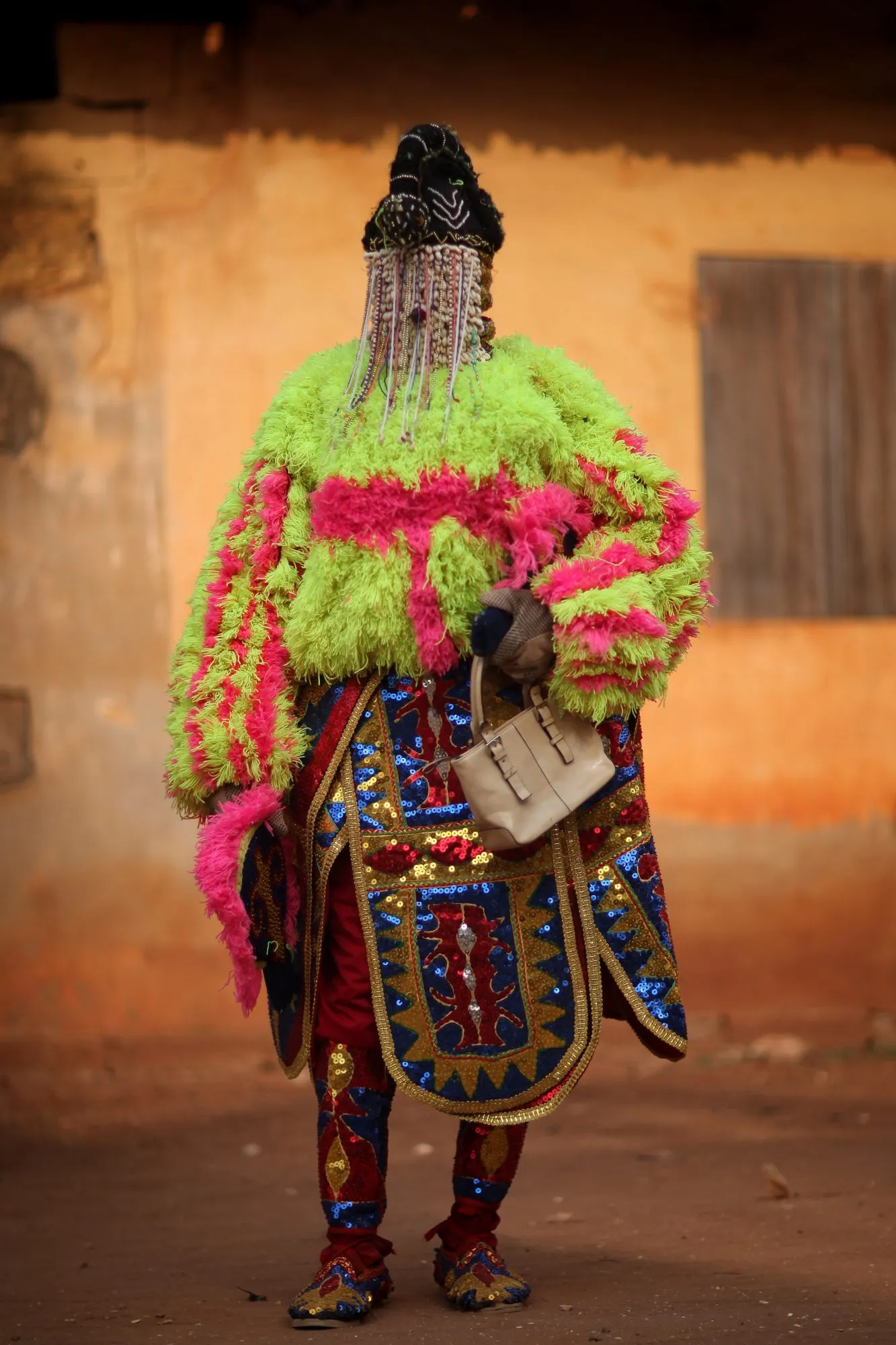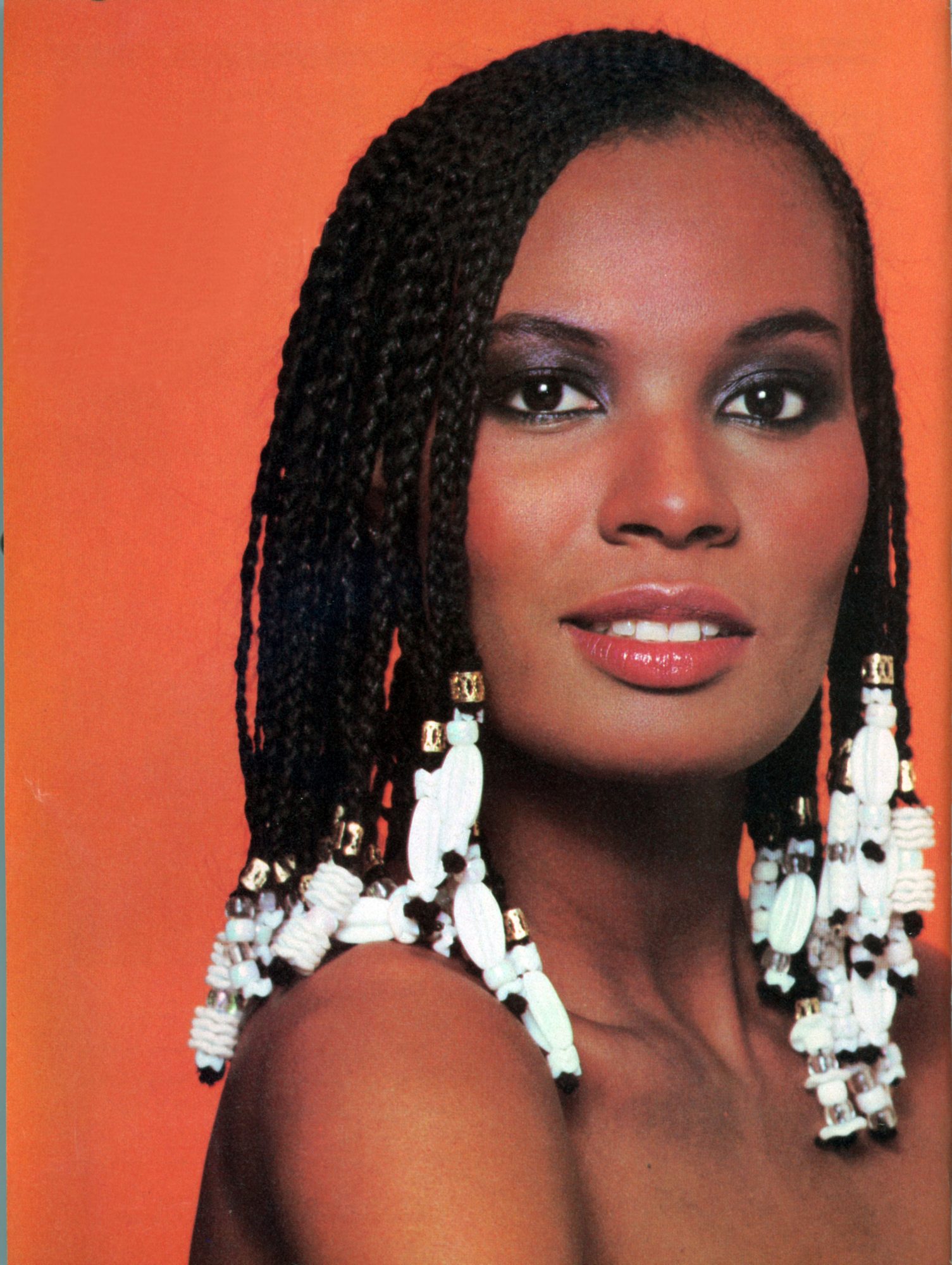You are viewing the article Here’s the Beautiful History of Beaded, Black Hair at Lassho.edu.vn you can quickly access the necessary information in the table of contents of the article below.
Here’s the Beautiful History of Beaded, Black Hair
This African tradition has been preserved for centuries.

“Look TT, I look so pretty,” my three-year-old niece gloated as she twirled in front of the mirror, admiring the pink beads accentuating her fresh plaits.
“You look so pretty baby girl,” I complimented in chorus.
As she spun, jumped, and skipped around the house, the nostalgic clacking of her beads drifted me back into my adolescence of the ’90s and early aughts. Back then, my mother had designated Saturdays as wash-day for me and my two sisters. One after the other, she would grease and glide her rat tail comb along our scalps to create neat square parts. Then, she would rhythmically weave strand over strand until our braids were taut from top to bottom. Each style was accessorized with trendy adornments of our choice. My oldest sister, like every pre-teen in the ’90s, gravitated to sparkling butterfly clips while my twin sister and I adorned with monochrome beads. As each bead slid down the shaft of our braids, the subtle crackle marked the finish of our new hairstyles for the week. What I then considered a routine wash day has evolved into a sacred understanding of hair in relation to Black culture.
When my mother styled our hair with beads, she evoked a ritual that’s connected our roots for centuries.
Beads are a symbolic adornment that predates the transatlantic slave trade. Archaeological records have traced the use of beads back to the last Ice Age, says Porsha Dossie, M.A., a public historian and creator of Hot Girl History Book Club.
“In burial spots, you see those glass beads, but the beads we’re most familiar with comes out of the transatlantic slave trade. I think what’s most interesting is that there was already an existing trade in beads on the continent, particularly in West Africa. The beads most often found and associated with that era actually comes from Europeans.”
Porsha Dossie
Arab traders were the first to introduce cowrie beads as early as the 8th century, but by the time Portuguese, French, Dutch, and British traders arrived in Africa by the 15th century, those beads had evolved into currency and cultural markers, notes writer Mia Sogoba in her essay, “The Cowrie Shell: Monetary and Symbolic Value.“
In pre-colonial Africa, beads were emblems of regalia, wealth, spiritual rituals, and even fertility. In what is present-day Nigeria and Benin, Yoruba and Dahomean kings would adorn cone-shaped crowns with beaded veils to represent gods. Beaded attire not only symbolized the king’s royalty, but his connection to ancestors and the spiritual realm.

A custom unbound by gender, “those beads symbolized you were of political importance in your community,” says Dossie. “In Benin, in the 17th and 18th centuries, cowrie shells were imported there more than anywhere else in the continent.”
When the transatlantic slave trade disrupted ethnic groups and tribal territories throughout the 16th to 19th centuries, generations of African Americans were thwarted from inheriting indigenous hair customs. Slaveholders would often shave the heads of captured Africans to dehumanize and erase their unique origins, according to the book, Hair Story: Untangling the Roots of Black Hair in America by Ayana D. Byrd and Lori L. Tharps. In Louisiana, lawmakers went as far as passing the Tignon Law, an order that deemed Creole women a threat to white women and banned them from donning their hair in public.
Determined to maintain their cultural autonomy, earlier slaves reimagined ways they could clasp on to their native heritage. The prominence of blue beads in artifacts uncovered from Southern plantation sites exemplifies how West African tradition arrived with slaves in America, despite white supremacist attempts at vilifying their customs. Some archeologists posit blue beads represented more than just physical adornments. They were vestiges of West African tradition, according to the academic article, “Blue Beads As African American Cultural Symbols.”
“The enslaved were just as interested in keeping up with new styles as we are today. This was evident in posters of runaway slaves and how they would describe their hair. They were able to maintain that culture through elaborate hairstyles.”
Porsha Dossie
By the 19th century, those beaded hairstyles weren’t as prevalent, as African American slaves opted for styles more conducive to working harsh, long hours in the fields. Sundays were the only day men, women, and children could groom and style their hair, but the resurgence of beads didn’t happen until the 20th century.
After the nadir era and clashing with the tail end of the Civil Rights movement, the Black Power movement was challenging respectability politics upheld by prominent Black leaders. It was the late ’60s and ’70s, and a more radicalized liberation approach was being ushered in. In major cities all over the country, the children of the Civil Rights movement were tapping into their African roots, electrified by the parallel rise of disco, soul, and funk—and beads were back.

“‘Black is Beautiful’ is popularized by the African Jazz-Art Society in Harlem. At that point, it’s only really in the urban North, but that aesthetic starts to permeate society once the Black Panther Party comes on to the scene,” says Dossie.
A decade aesthetically defined by afros, braids, and beaded cornrows, Black women in pop culture like Cicely Tyson, Floella Benjamin, Patrice Rushen, Miriam Makeba, and Bern Nadette Stanis (aka Thelma from the hit sitcom Good Times) were influencing hair trends across the diaspora. Cowrie beads dangling from intricate cornrow patterns harkened back to our African origins, a vision rendered into an imagined Utopia for Black Americans still dealing with violent and racist oppression.
For the first time, Black people were permitted to unapologetically embrace their roots. A contagious expression of beauty and pride, it wasn’t long before a trend once shunned was being gobbled and popularized via cultural appropriation.
“A cultural touchstone for a lot of people who work with this history is the film ’10.’ In the film, Bo Derek, this blue-eyed, blonde-haired woman, had these box braids with beads in them. At that point, it was very accessible. It was ‘this is stylish. This isn’t just some subculture or Black subversion.’ I think one thing that’s been a through-line in American culture, even during chattel slavery, is we’re cool.”
Porsha Dossie
Moving toward the ’90s and early 2000s, beads were once again slid into the forefront with tennis sister duo Serena and Venus Williams and then budding singer Alicia Keys. Those women reified the symbolism and style of beads, inspiring younger girls like my sisters and me to sport side cornrows characterized by small white beads. In 2016, when Solange dropped her acclaimed album “A Seat at the Table,” visuals of her shaking her beaded braids in the “Don’t Touch My Hair Video” seemed to speak for generations of Black women who had to resist the policing of their hair.
Today, beads are indelible relics, constantly shaping fashion and Black self-expression.
Specifically, it’s strung mothers and daughters together for the past few decades. As Black mothers carefully part and plait and pepper beads, they’re empowering their daughters to revel in their culture while defying the centuries-long attempt at severing our tradition from the roots.
Florida-based hairstylist Victoria Lashae, who specializes in natural protective styles like faux locks, box braids, and knotless braids, says she’s noticed more of her clients opting to embellish their hairstyles with her custom jewels and beads. “It’s nostalgic, fun, and youthful,” she says. “We put beads in our hair because we want to look fancy and add a special flair.”
Harkening back to an epochal Africa, before colonialism and the slave trade had yet to whither tribalism across the diaspora, Black women are re-harnessing the power in enshrining our hair with beads.
“Looking at hair beads as a tradition, I think it’s become associated with Black girlhood and it’s relatively recent. It’s really the ’80s, ’90s, and the 2000s. I think it will endure because our generation will keep it going. It’s so connected to our childhood.”
Porsha Dossie
As I pranced around the room with my niece, I bore witness to the intergenerational bond between her, my sister, and our mother. With the whipping of braids and clacking of beads reverberating in the room, I lifted her up, looked her in her brown eyes, and edified her aplomb: “You are beautiful.”
Thank you for reading this post Here’s the Beautiful History of Beaded, Black Hair at Lassho.edu.vn You can comment, see more related articles below and hope to help you with interesting information.
Related Search:

